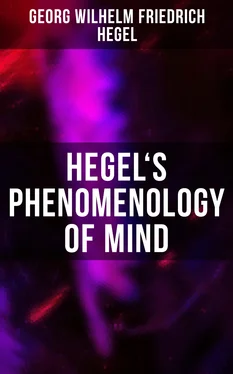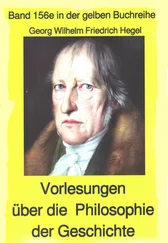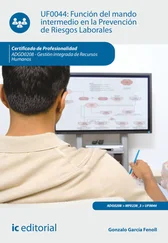The being of this object for consciousness is mediated through the movement of appearance, by which the content of perception and the sensuous objective world as a whole, get merely negative significance. There consciousness is turned back upon itself as the truth; but, being consciousness, it again makes this truth into an inner being of the object, and distinguishes this reflection of things from its own reflection into self: just as the mediating process likewise is for it still an objective process. This inner nature is therefore for it an extreme placed over against it. But it is on that account the truth for it, because therein, as in something essentially real, it possesses at the same time the certainty of its own self, the moment of its own self-existence. But it is not yet conscious of this basis [its self-existence], for the independence, its being on its own account, which should have the inner world within it, would be nothing else than the negative process. This negative process, however, is for consciousness still objective vanishing appearance, and not yet its own proper self-existence ( Fürsichseyn ). Hence the, inner is no doubt taken to be notion., but consciousness does yet know the nature of the notion.
Within this inner truth, this absolute universal which has got rid of the opposition between universal and particular, and become the object of understanding, is a supersensible world which henceforth opens up as the true world, lying beyond the sensuous world which is the world of appearance. Away remote from the changing vanishing present ( Diesseits ) lies the permanent beyond ( Jenseits ): an immanent inherent reality ( ein Ansich ), which is the first and therefore imperfect manifestation of Reason, i.e. it is merely the pure element where the truth finds its abode and its essential being.
Our object henceforward has thus the form of a syllogistic inference ( Schluss ), whose extremes are the inner being of things and understanding, and its middle term the sphere of appearance. The course of this inferential process, however, furnishes the further characterization of what understanding detects in the. inner world by the aid of the middle term; and gives rise to the experience understanding goes through regarding this relation of the terms when joined and united together.
The inner world is so far for consciousness a bare and simple beyond, because consciousness does not as yet find itself in it. It is empty, for it is the nothingness of appearance, and positively the naked universal. This type of inwardness suits those who say that the inner being of things cannot be known; 7 but the reason for the position would have to be taken in some other sense. Certainly there is no knowledge to be had of this inner world, as we have it here; not, however, owing to reason being too short-sighted, or limited, or whatever you care to call it (on this point there is as yet nothing known at this stage; we have not gone deep enough for that yet), but on account simply of the nature of the case, because in the void there is nothing known, or, putting it from the point of view of the other side, because its very characteristic lies in being beyond consciousness.
The result is, of course, the same if you place a blind man amid the wealth of the supersensible world (if it has a wealth, whether this be a content peculiarly its own, or whether consciousness itself be this content), and if you place one with sight in absolute darkness, or, if you like, in pure light, supposing the supersensible world to be this. The seeing man sees in that pure light as little as in absolute darkness, and just as much as the blind man in the ample wealth which lay before him. If there were nothing more to be done with the inner sphere and with our being bound up along with it by means of the world of appearance, then there would be nothing left but to stop at the phenomenal world, i.e. take something for truth about which we know that it is not true. Or in order that there may be something in this empty void — which, while it originally came about as a state devoid of objective, things, has, however, since it is emptiness pure and simple, to be taken to be also devoid of all mental relations and distinctions of consciousness qua consciousness — in order that in this complete vacuity, which is even called the holy of holies, the inner sanctuary, there may yet be something , we should be driven to fill it up with dreamings, appearances , produced by consciousness itself. It would have to be content with being treated so badly, for it would not deserve anything better, since even dreams are something better than its own barren emptiness.
The inner world, or the supersensible beyond, has, however, arisen : it comes to us out of the sphere of appearance, and the latter is its mediating agency: in other words, appearance is its essential nature and, in point of fact, its filling. The supersensible is the established truth of the sensible and perceptual. The truth of the sensible and the perceptual lies, however, in being appearance. The supersensible is then appearance qua appearance . We distort the proper meaning of this, if we take it to mean that the supersensible is therefore the sensible world, or the world as it is for immediate sense-certainty, and perception. For, on the contrary, appearance is just not the world of sense-knowledge and perception as positively being, but this world as superseded or established in truth as an inner world. It is often said that the supersensible is not appearance; but by appearance is thereby meant not appearance, but rather the sensible world taken as itself real actuality.
Understanding, which is our object here, finds itself in this position, that, for it, the inner world has come about to begin with, only as the implicit inherent being, universal and still without a filling. The play of forces has simply and solely this negative significance of not being something per se; and its only positive significance is that of being the mediating agency, but outside understanding. The relation of understanding to the inner world through mediation is, however, its own process, by which the inner world will be found to receive fullness of content.
The play of forces is what understanding has directly to do with; but the real truth for it is the inner world bare and simple. The movement of force is consequently the truth only by being in like manner something simple. Regarding this play of forces, however, we saw that its peculiarity lay in this, that the force which is awakened into activity by another force is just on that account the inciting agency for this other force, which thereby itself only then becomes an inciting force. We have here in this way merely direct and immediate interchange or complete exchange of the characteristic which constitutes the sole content of what comes before us, viz. the fact of being either universal medium or negative unity. It ceases immediately on its entrance in determinate form to be what it was on entering: it awakens or incites, by its appearance in determinate shape, the other side, which thereby gives itself expression, i.e. the latter is now directly what the first was to be. Each of these two sides, the relation of inciting and the relation of the opposed determinate content, is on its own account an absolute process of permutation and transposition. But these two relations are again themselves one and the same, and the formal distinction of being incited and of inciting to activity is the same as the distinction of content, i.e. the distinction between the incited factor as such, viz. the passive medium, on the one side, and the inciting factor, viz. the active medium, the negative unity, or the “one” on the other side. In this way there disappears all distinction of contrasted and opposed particular forces, which were meant to be present in this process; for they rested solely on the above distinctions. And, along with both those distinctions, the distinction between the forces collapses likewise into merely one. There is thus neither force nor inciting and being incited to action, nor the characteristic of being a stable medium and a unity reflected into self, there is neither a particular which is something on its own account, nor are there diverse opposites. What is found in this flux of thoroughgoing change is merely difference as universal difference, or difference into which the various opposites have been resolved. This difference as universal, consequently is what constitutes the ultimate simple element in that play of forces, and is the resultant truth of that process. It is the Law of Force. 8
Читать дальше












